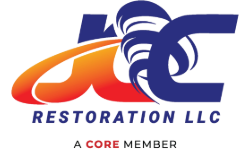When a natural disaster strikes, the last thing on most people’s minds is the quality of the air they’re breathing. But indoor air pollution can be a major problem in the aftermath of a hurricane, tornado, or other event that damages homes and buildings.
There are a number of ways that indoor air pollution can increase after a disaster. First, if there is damage to the building, that can allow outside air – and pollutants – to come inside. In addition, the use of generators and other fuel-powered equipment can release harmful chemicals into the air. And finally, cleaning products and other chemicals used in the aftermath can also contribute to indoor air pollution.
The health effects of indoor air pollution can be serious, and they can be especially dangerous for people who are already sick or have respiratory problems. In some cases, indoor air pollution can even be deadly.
That’s why it’s important for people to be aware of the risks and take steps to protect themselves. If you’re in an area that has been affected by a natural disaster, be sure to ventilate any areas where you’re using fuel-powered equipment, and avoid using harsh chemicals if possible. And if you have any respiratory problems, be sure to stay indoors as much as possible and use an air purifier if you have one.
By taking these simple steps, you can help protect yourself and your family from the dangers of indoor air pollution.
https://www.cdc.gov/disasters/iaq.html
https://www.epa.gov/iaq-disasters
https://www.lung.org/blog/disaster-preparedness-and-air-pollution
